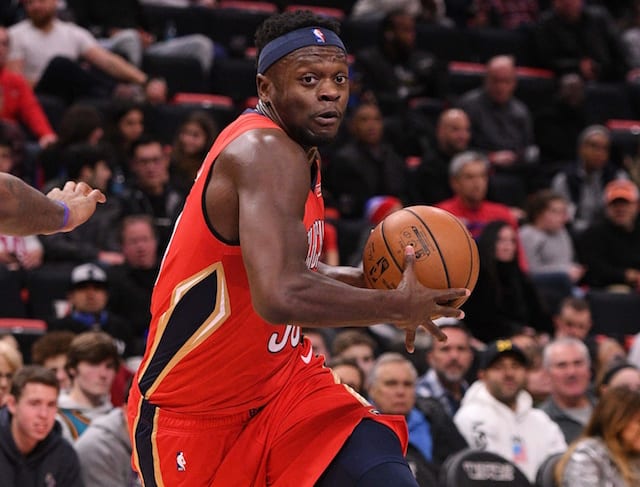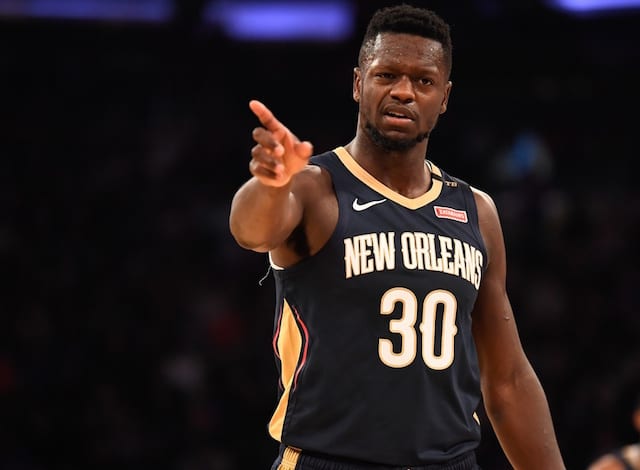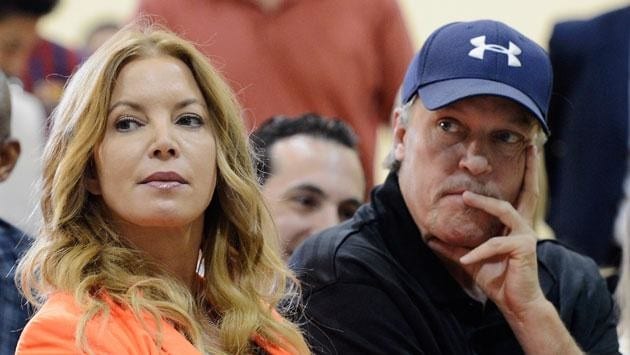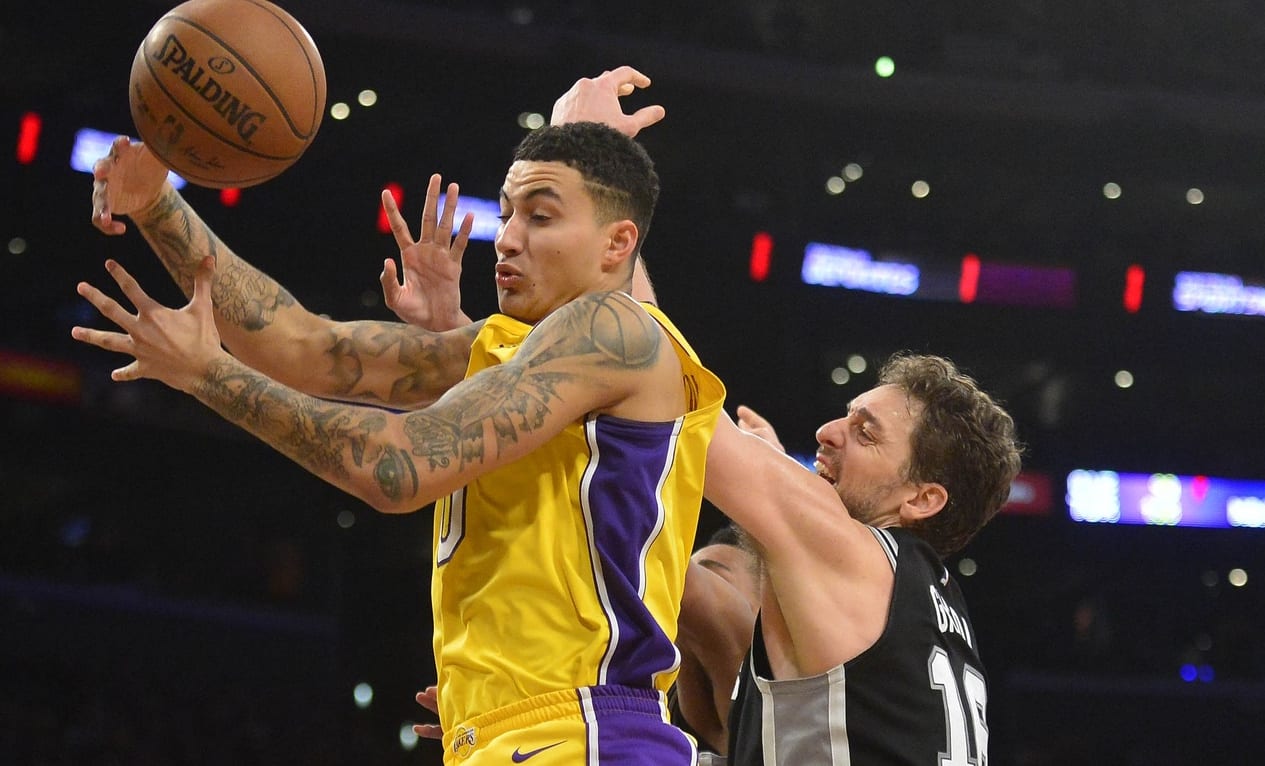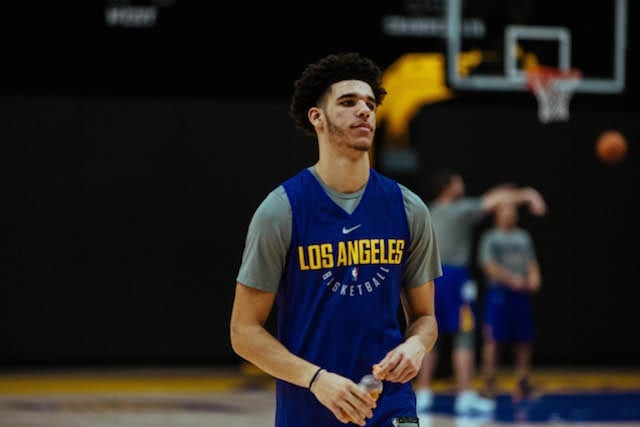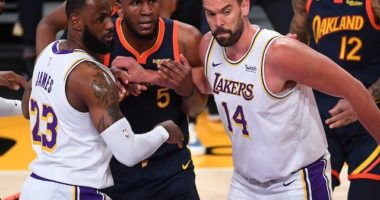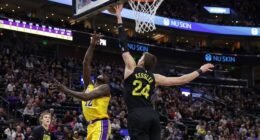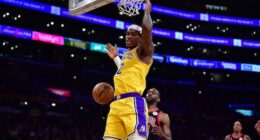Since he became head coach of the Los Angeles Lakers, Luke Walton has wanted to emulate the success of the Golden State Warriors by featuring a small-ball lineup as much as possible. The problem is, almost every time he has tried it this season, the results were disastrous.
There is no player on the current roster equipped to thrive at center in a small lineup. Julius Randle played the position last season and did it very well. In many respects, Randle is the ideal small-ball center, but he is now playing that position for the New Orleans Pelicans.
Randle emerged as the Lakers’ best player, but in a move that caught some by surprise, the front office decided it was not a priority to bring him back. Letting him go was controversial enough, but what really hurt was that a talented young player like Randle was allowed to depart and the team got absolutely nothing for him in return.
Randle has taken his game to a new level this season. He is averaging 19.3 points per game on 55 percent shooting from the field, to go along with 9.5 rebounds. He’s doing it in only 27.7 minutes per game.
These numbers are increasing. In December, Randle is averaging 23.8 points and 11.0 rebounds. This uptick coincided with his insertion into the starting lineup; he came off the bench earlier in the season. In one recent game, Randle scored a career-high 37 points.
Randle was chosen by the Lakers with the seventh pick in the 2014 NBA Draft. He arrived at a turbulent point in franchise’s history, with Kobe Bryant’s career coming to an end and the then-front office not completely prepared for the aftermath.
Randle broke his leg in the first regular season game of his professional career and missed his entire rookie season. He bounced back and stayed healthy the next two years, but his effort, energy, and focus seemed to ebb and flow, which frustrated those who recognized his talent but questioned whether he was fully committed.
Before last season, the front office challenged Randle to return in better shape. He transformed his body through a combination of exercise and diet, but when the season started, he still found himself on the bench and wasn’t happy about it. Randle stayed the course and became a starter again in December, never looking back.
Randle’s numbers last season improved significantly. He averaged a career-high 16.1 points per game and shot 55 percent from the field. He also grabbed 8.0 rebounds a night. It was clear that something had clicked and that Randle’s career was finally on an upward trajectory after some ups and downs.
Fans who questioned him before suddenly found themselves proponents of Randle Island. Randle’s statistics so far this season reflect another huge jump, and it was predictable. So why did the front office seemingly have so little interest in re-signing him?
The biggest reason was that Lakers president of basketball operations Magic Johnson and general manager Rob Pelinka decided to swing for the fences in free agency with the goal of signing two superstars to max contracts.
Their plan suffered a temporary setback when Paul George chose to re-sign with the Oklahoma City Thunder. Johnson and Pelinka more than salvaged the situation by signing LeBron James. They still needed a second superstar, but that would have to wait until the summer of 2019.
To retain the necessary salary cap space, instead of signing Randle to a long-term deal, they opted to sign a series of one-year contracts with veterans like Rajon Rondo, Kentavious Caldwell-Pope, JaVale McGee and Lance Stephenson.
In hindsight, it was clear for at least two years that the front office did not view Randle as a cornerstone of the future. If the team had viewed him as central to their plans, they would have offered him a lucrative contract extension like the Denver Nuggets did with Gary Harris and Jamal Murray, and the Phoenix Suns did with Devin Booker.
Or like the Lakers had done with Jordan Clarkson.
Whether right or wrong, the Lakers preferred to retain cap space in case they are able to sign another superstar next summer. The only question is why they did not part with Randle at the trade deadline last season as was rumored, or in a sign-and-trade over the summer, so at least they would have received something in return.
Of course, all of this is a gamble on the Lakers’ part. If they end up with Anthony Davis, Kevin Durant, or another star of that ilk, it was all worth it. But that is not going to be easy, since many top free agents reportedly don’t want to play second fiddle to James, and the competition to trade for Davis will be fierce.
Randle presumably would not have re-signed for the modest terms he accepted with the Pelicans, which for this season are roughly equivalent to what the Lakers are paying Rondo and less than what they are paying Caldwell-Pope.
Randle was not going to re-sign unless on a long-term deal, which the Lakers were not willing to offer. He is a confident, proud man, and it is easy to see that he felt disrespected by a front office that was sending him a clear message that he was not a priority, that they did not view him as a star.
Then there is the Aaron Mintz factor. Mintz is the agent for Paul George and D’Angelo Russell. It has been reported that he was not happy with how the Lakers handled those two clients in recent years. The Lakers could not even get a meeting with George this past summer.
Randle will return to Staples Center on Friday night as a member of the Pelicans and is likely to receive a warm reception. Basketball is a business, and the Lakers made a business decision that they wanted to save their cap space for a proven superstar given the fact that James is turning 34 later this month.
Whether the Julius Randle gamble pays off will be decided next summer.
